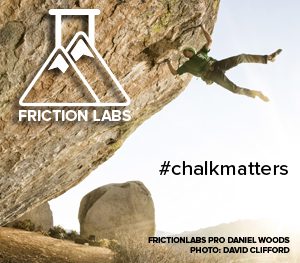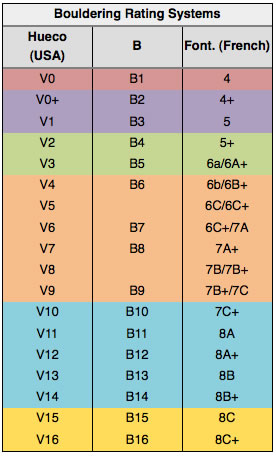In Memoriam: John Rosendahl
I have held off this past week posting this only because I really didn’t know what to say; in short, I was speechless. A friend who works at the same gym that we all regularly visit came to the rescue by writing a wonderful eulogy that was posted in the gym and, in an edited version, appears on Rock & Ice’s online site. Matt was gracious to allow me to post it in full here which appears below.
The above image is courtesy Supertopo.com‘s post regarding John by Nate101 (I don’t know Nate personally and not sure his last name):
“…John is the third climber we’ve lost in our small community, following Vern Stiefel in 2006 and David Slater just last year. We are all stunned and looking for answers…”
John Rosendahl
December 8, 1955 – September 1, 2012
Our Soul Soloist
Every climbing community has its own “stonemaster”. Usually, they’re an older climber, whose unyielding ethics and dedication to bold ascents remains steadfast in the face of the modern hang-dogging, rap-bolted, crash-pad-mountain climbing of today. They may look frail, but, just like the rusted pitons that we desperately clip on classic run-out routes, they carry with them the toughness of a generation of hard communion with the rock, and refuse to bail no matter what the impending storm. They inspire the newbies to get outside and get down to business, and remind the aging that 40 is far from the end of the road. For many of us in the Southern California climbing community that climber was John Rosendahl.
John free-soloed with legends on legendary climbs, and had the decency to show us all that you could be old and bold at the same time. Even after having his spine fused he continued to rip down problems well into his fifties that most of us would be hard pressed to finish on rope in our twenties. When John Bachar sustained a similar back injury and was questioned about what this meant for his return to climbing he answered,
“…my good friend John Rosendahl had the same operation and the dude cranks! This summer he was soloing “King Spud” in Clark’s Canyon as well as many other testpieces. He came by and visited me and gave me some support – told me he had come back even stronger after his fusion than he was before! He’s in really good shape and a little older than me – he said I’d be okay and cranking again soon.”
I remember one occasion where a group of us ran into Rosendahl climbing in Clark’s Canyon. He was hiking into the crag with little more than a carpet square and a shoe box from which he pulled a pair of leather bottom dress shoes. Bewildered we stopped racking our countless quick-draws and flaking our rope to give him a befuddled look regarding his gear. In response he simply looked over at us, looked down at his shoes, and said, “What? They’re good for edging”. Then he quickly wiped his feet on the carpet square and proceeded to solo an 11C in dress shoes. He taught me that the rope is nothing more than a mental crutch. And that any mental crutch in life can be overcome so long as one’s desire to push through is not specific to the task, but broadened to a desire to become a person able to live with no regret.
Most people, and certainly many climbers, regard free-solo climbers as foolhardy attention seekers. To the notion of being foolhardy John would say, “foolhardy is something that can only be measured by someone with equal exposure to the risk”. As far as soloing for attention goes, John was as far from this notion as one could be. He soloed without publicity, without onlookers, and often took months to himself to climb in solitude. His climbing was marked not by a quest for adrenalin, but a quest for self-fulfillment, or in his words, “I sought the rewards from free-soloing as a means to feel more confident about other parts of my life that had nothing do to with physical danger”. His every movement was calculated, with as little as possible left to chance. Every moment, he was constantly re-evaluating his body’s feedback, visualizing the moves, examining the surroundings and mitigating the risks involved. But, despite our preparations, we all have doubts, and John was no exception. What made John an exceptional climber, was his ability to rise above doubts and ascend anyway. One of these instances came out for John during a solo climb in Owens River Gorge he retold in an interview on May 11, 2011.
“I’ve actually been on one route in Owen’s River Gorge in the middle of summer that wasn’t at the upper limit of my soloing ability, but hard enough. It was only maybe 100 feet long and I was on it for probably an hour going up and down and I had actually gone up and down three or four times and walked away from it, deciding that I didn’t want to [climb it]. Then in the middle of the retreat of walking away I had realized that I had stopped and remained at the crux long enough that climbing through the crux would be easier than what I had already done. So I kind of jumped ship and reneged on my decision to walk away and walked back to it, did it, and it felt just like I imagined it would…It takes a very rational mind to do that. No rope has ever pushed someone up a climb, it’s always secondary to skill and judgment. A free-soloist knows that any wave of panic is going to be catastrophic and so you practice doing it [free-soloing] as much as possible with a clear head to eliminate panic, should you find yourself in a situation like I did…and hopefully [you] can call up once again the utterly rational conclusion that you can’t afford to worry about ‘what if’. The clock is ticking and you have to pull through. Any other thought is going to be a dangerous one…I think the only thing that might be a difference between people that have learned to manage risk in very dangerous situations and those who haven’t is the initial desire to improve ones rational response to danger. I don’t think I’m all that rare; my motivation to do so in the first place may be somewhat rare.”
John didn’t just crush climbs, however, he crushed life. He set the record for the fastest unsupported crossing of the John Muir Trail (a grueling 225 mile trail from Whitney Portal to Yosemite Valley) at: 5 days and 7 hours. A record that stood uncontested for over 15 years. In true hard-man fashion he gave up filtering his water one day in and drank river water to go faster. His logic was that Giardiasis (an infection of the small intestine caused by parasites found in river water) wouldn’t set in for at least a week, and by then he’d be home and could deal with the repercussions. I asked him once when he would rest and he answered, “I would run until I started to feel delirious, then I would take a fifteen minute nap, get up and keep running”. So while the moniker of “living hard and fast” usually gets applied to undeserving rockers and drug addicts, I know that it is a term built for people like John, who show the passion that should put forward every day in pursuit of a full life.
A Lecturer and Instructional Program director of physics at the University of California, Irvine he was as much a teacher by occupation as he was in the climbing community. In a sport that is usually marked by individualism John could always be counted on for encouragement and support often saying, “I’m just as excited to see someone get through something as I am with my own climbs”. Climbing with him naturally pushed you to be your best and before you knew it you’d be sending harder than you ever expected, John’s voice serving as the steady inner monologue that you needed to overcome the crux. Climbing, as well as life, is overcome with cruxes. Some of them we know we can conquer and others are marked with unknown danger. Some have little consequence and others carry the weight of life and death. I once asked John how he could get himself to push through an unknown crux with everything on the line. He answered, “When you really don’t know, the only thing I can say is you still have one thing: You have the experience of having confronted the unknown before and you’re here today knowing what the benefits are”. In the end, it wouldn’t be climbing that claimed his life. And while it was his decision to risk his life in pursuit of spiritual fulfillment, it would also be his decision to end his life prematurely. John was a teacher to many, family to few, and inspiration to countless. I hope that he’s confronting the final unknown knowing that he will be missed.
–Matt Blank
Category: Joshua Tree Updates














